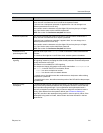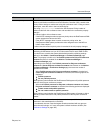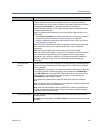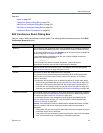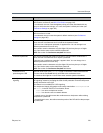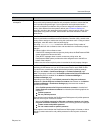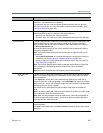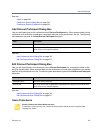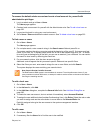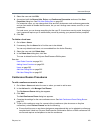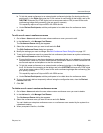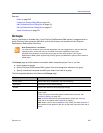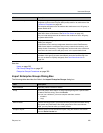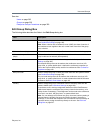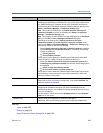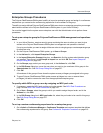
Users and Groups
Polycom, Inc. 322
To remove the default admin account and create a local account for yourself with
administrative privileges
1 Log in as admin and go to User > Users.
The Users page appears.
2 Create a local user account for yourself with the Administrator role. See To add a local user on
page 322.
3 Log out and log back in using your new local account.
4 Go to Users > Users and delete the admin account. See To delete a local user on page 323.
To find a user or users
1 Go to User > Users.
The Users page appears.
2 For a simple search, enter a search string in the Search users field and press E
NTER.
The system matches the string you enter against the beginning of the user ID, first name, and last
name. If you enter “sa” it displays users whose IDs or first or last names begin with “sa.” To search
for a string not at the beginning of the field, you can use an asterisk (*) as a wildcard. You can restrict
the search to local users by selecting the check box.
3 For more search options, click the down arrow to the right.
Additional controls appear that let you search specific fields and use specific filters.
4 Select the filters you want, enter search strings for one or more fields, and click Search.
The system displays the users matching your search criteria.
To add a local user
1 Go to User > Users.
2 In the Actions list, click Add.
3 In the Add User dialog box, complete the General Info fields. See Add User Dialog Box on
page 305.
4 To create the new user account, but not activate it immediately, select Account Disabled.
5 To assign the user additional roles (besides Conferencing User), click Roles. Select the role or roles
you want to assign and use the arrow button to move them to the Selected Roles list.
Explicitly assigned roles give the user access to the system management interface.
6 Click OK.
To edit a user
1 Go to User > Users.
2 If necessary, filter the Users list to find the user to be modified.
Note: Search Results Could Be Unsorted
The RealPresence DMA system’s user database is unsorted. To avoid performance issues, if your
query matches more than 4000 users, no attempt is made to sort the results on the server side before
returning the matching records.



